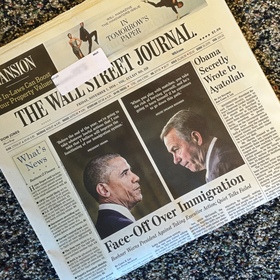The 2016 mid-term elections in the United States are complete, and the two major political parties are evaluating what the results mean for them politically. Both Republicans and Democrats appear to have adopted a stance that might best be described as: “I will say I will work with the other side, but only if they do what I want them to do.” This is, of course, a prescription for something other than “working together,” and it is likely to leave much of substance languishing.
Both sides are already identifying immigration as an area of conflict. The president has vowed action (which observers say is likely to include some form of work permit for undocumented individuals), while the speaker of the House of Representatives has vowed that any unilateral action by the president is “playing with matches.” This is on the heels, reportedly, of a year of discussions between the two party leaders that ended poorly.
Kettering research over decades suggests that the way difficult issues like immigration are framed by policy leaders and experts is often at odds, or at least out of step with, the way in which people see those issues. Where the dominant political discourse frequently sees conflict, people in communities are wrestling with tensions among the things they hold valuable. This is not a question of one solution versus another. Instead, the question individuals must wrestle with is, what am I willing to give up—and under what conditions.
On immigration, Kettering research suggests that people see this issue in a more nuanced way than the binary amnesty-vs.-tough-borders way in which the issue has been portrayed in the media. Their concerns center on a range of things that are commonly held valuable by all—our self-image as a welcoming nation, personal and national security, and the reality seen by many that our prosperity depends on immigrants. These concerns became the basis for the options in a guide for public deliberation that Kettering prepared for the National Issues Forums Institute, Immigration in America: How Do We Fix a System in Crisis? Three options are outlined, each rooted in a different view of the problem:
1. Welcome New Arrivals. A rich combination of diverse cultures is what defines us as a people. We must preserve our heritage as a nation of immigrants by shoring up our existing system while also providing an acceptable way for the millions of undocumented immigrants currently living here to earn the right to citizenship.
2. Protect Our Borders. Failure to stem the tide of illegal immigration undermines our national security, stiffens competition for scarce jobs, and strains the public purse. We need tighter control of our borders, tougher enforcement of our immigration laws, and stricter limits on the number of immigrants legally accepted into the country.
3. Promote Economic Prosperity. To remain competitive in the 21st-century global economy, we need to acknowledge the key role that immigrants play in keeping the US economy dynamic and robust. This option favors a range of flexible measures, such as annual adjustments to immigration quotas, that put a priority on our economic needs.
The difficulty of immigration lies in the tensions between these things. One reason this issue is so intractable is that these tensions must be worked through by the public before there can be any durable policy solution.
If people deliberate in communities across the United States, where they can work through these options and address the trade-offs that they require, policymakers may well see a public voice emerge that can suggest the outline for a path forward.
Click here to order Immigration in America from the NIFI store.

